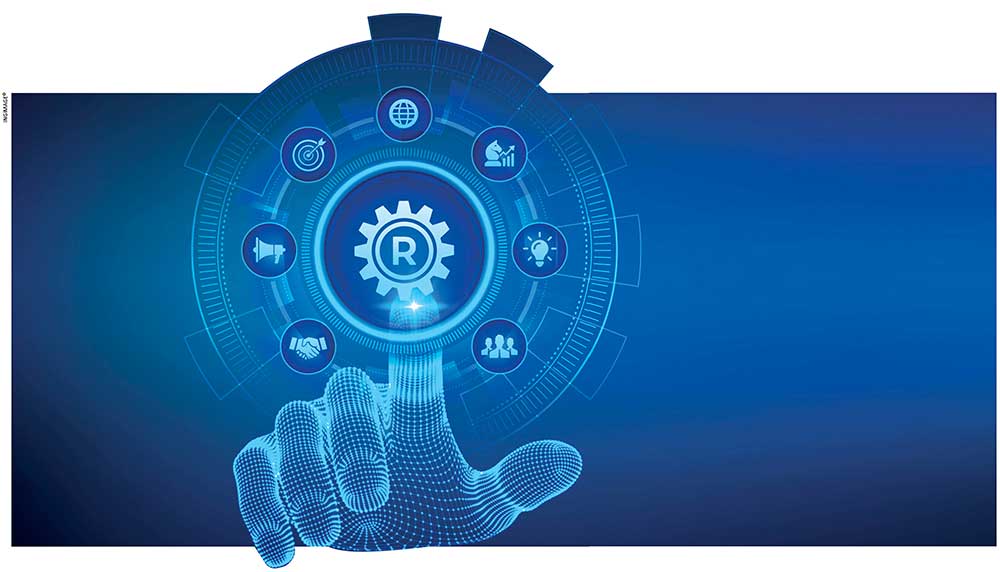BRAND VALUE

PRICELESS INTANGIBLE ASSET
Sohan Jayasena underscores the value of a brand to a business and its customers

The value of the 100 most valuable brands in the world amounts to US$ 6.9 trillion, according to Kantar. To give this context, Sri Lanka’s GDP was less than 85 billion dollars last year. While it’s understood that this isn’t a parallel comparison, it serves to illustrate the sheer scale of the top 100 global brands, their immense value and the influence they wield globally.
So what is a brand – and what makes it such a powerful asset?
And why did former CEO of Quaker Oats John Stuart say that “if this company was to split up, I would give you the property, plant and equipment – and I would take the brands and the trademarks, and I would fare better than you”?
Branding has often been mistaken as being a byproduct of marketing – something that can be neatly packaged into a logo with a catchy tagline or mere social media artwork.
However, branding transcends the superficial elements that many associate it with because it’s really a symphony of different facets – including visual, audio, memories and associated feelings, design and so on – which converge to shape customers’ perceptions and relationships with it.
Marketing is merely a function of branding; it is somewhat tangible, measurable and transactional, and seeks to promote the brand or its products.
Meanwhile, branding is holistic and the mechanism that a company uses to position itself in the customer’s mind. It’s the complex science that works with consumer psychology and enables a cup of coffee that’s worth a dollar to be sold for US$ 4.50, simply because it has the brand logo on the cup or mug.
As illogical as it may sound, that’s the power of a brand. It gives the company the licence to impose premium pricing and enables consumers to be less price sensitive, and rationalise and even justify the higher price.
A brand is a powerful tool that can transform a commodity into an experience.
For instance, Nike sells over 800 million pairs of shoes a year (i.e. shoe effect). Critics maintain that many other brands surpass the quality of its products so what has made Nike what it is?
The brand’s positioning and messaging embody motivation, perseverance and achievement. In its Find Your Greatness campaign for example, Nike communicated that greatness is for everyone rather than only a few elite athletes.
It took its customers beyond the product and resonated deeply with the ordinary consumer’s emotions, and aspirations of personal empowerment, success and overcoming obstacles. This brand positioning has tapped deep into human emotions and effectively crafted a resonance that a mere shoe cannot achieve on its own.
Furthermore, a brand is also an associated feeling that helps garner genuine trust from a customer.
A young father witnessed this phenomenon a few months ago. It’s often a parent’s yearning to provide his or her children with the best that he or she can afford. When he and his wife were shopping for their newborn, it was evident that the brand Farlin had been working on their minds throughout their lives even though they weren’t customers until then.
Whatever product they needed – whether it was nappy washing detergent, milk bottles, storage cups or cooking utensils – they most often opted for Farlin. Despite its price range being much higher than alternative brands, Farlin had firmly acquired the most critical position in the minds of the new parents’ minds, gained their trust and simultaneously built top of mind recall.
It could take years to acquire such real estate in a customer’s mind but once secure, the brand often owns that person for a lifetime.
Brands also go on to play the role of an instrument of differentiation and a testament to quality, which impacts all stakeholders. They are also a trump card for the company as the global consumer has grown into being a more emotion led buyer where product benefits are no longer the sole decisive factor.
The consumer’s brain decodes the different messages, feelings, experiences and associations with the brand, and forges a bond that transcends transactions, and creates an abiding impression that translates into repeat business and loyalty.
So a brand could also be one of the most valuable assets of a business, often accounting for roughly 20-30 percent of its value.
A strong brand can act as a cushion to minimise the impact of global uncertainty and dynamics through its positive influence on a company’s range of stakeholders – such as customers, suppliers, potential employees, financial institutions, regulatory bodies, investors and so on.
It’s clear that a brand is one of the most valuable assets a company can own and branding is a complex science that works with consumer psychology. As such, a brand can evolve into an asset without which businesses wouldn’t be able to flourish.




Leave a comment